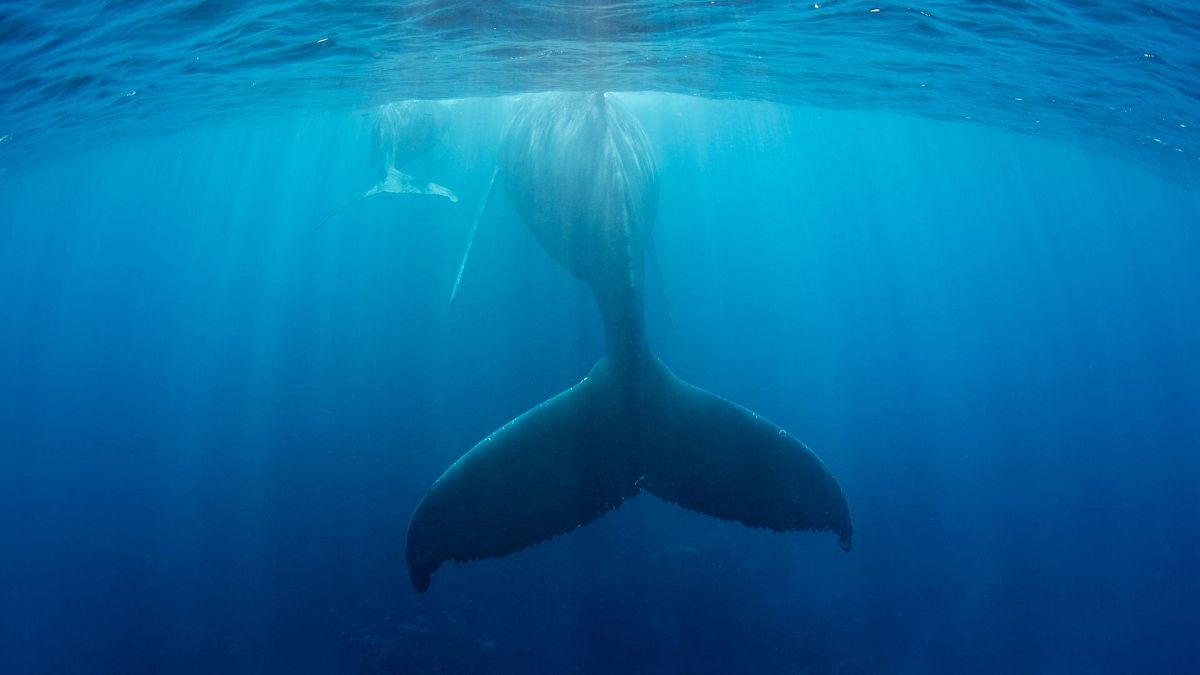NGO World Sustainable Organisation has launched a certification campaign to raise awareness of the danger of ship strikes.
Ship strikes pose a serious threat to whales and have the potential to cause highly endangered subspecies to go extinct.
The remaining 1.3 million whales left in our oceans are facing an increasing amount of shipping traffic when coming to the surface and travelling to their feeding or breeding areas.
Global maritime traffic increased fourfold between 1992 and 2012. In some corners of the world, such as the Arctic, it actually doubled between 2013 and 2018. The number of whales, in the meantime, is on the decline.
Since commercial whaling was banned in 1986, the biggest measurable threat to whales is being swept up as bycatch. An estimated 300,000 a year are drowning after getting entangled in fishing gear.
But there could be a bigger threat. Ship strikes, where vessels collide with marine creatures, are not so easily measured but can be just as lethal. The sad sight of the body of a whale, attached to the front of a boat entering a port shows just a fraction of the accidents.
"It's very hard to know how many have actually been impacted by some of these threats if their bodies are just sinking and never been found at sea, " says policy director at Whale and Dolphin Conservation Society North America Sue Fisher.
Collisions with large vessels often go unnoticed and unreported.
"Many whales are found stranded on the shore with impact injuries that are consistent with being hit by a vessel," she adds.
For some populations, such as the critically endangered North Atlantic right whale whose main habitat is the busy waters off the east coast of the USA and Canada, the problem is even bigger. Mortality due to ship strikes may make the difference between extinction and survival, the International Whaling Commission states on its website.
Whales can make a big difference in tackling climate change
Whales play a significant role in supporting healthy marine ecosystems and tackling climate change. They provide nutrients to the phytoplankton which soak up 40 per cent of all CO2 produced on the planet.
The giant marine mammals also sequester around 33 tonnes of CO2 which is 1,500 times what a tree absorbs in a year.
Who can make the change?
The lurking threat of large vessels can be tackled by governments, operators, even by consumers, says the World Sustainable Organisation (WSO).
The NGO has launched a new project called 'Save the Whales' following its 'Friend of the Sea' certification programme. Those operators who join the programme and meet a set of requirements, including extensive whale observation and data exchange, can get a 'Whale-Safe' certification.
"Even though the Whale-Safe project has been launched only recently, two main carrier companies - Seatrade and GreenSea - are already certified for Sustainable Shipping, " says founder of World Sustainable Organisation Dr Paolo Bray.
The NGO is also advocating to move some of the shipping lines that are cross important feeding or breeding areas. According to its report, high-risk zones include the Southern coast of Sri Lanka, the Hauraki Gulf in New Zealand, the Canary Islands and the Mediterranean Sea, among others.
Trade association the World Shipping Council did not provide comment but stated in its response that it is tackling the problem. It says it is working closely with two environmental organizations; the International Fund for Animal Welfare and the Great Whale Conservancy.
The trade association, as well as WSO, is also working with Sri Lankan authorities to move the shipping lanes on the southern coast. Fatal collisions have almost doubled in the past 40 years leading local blue whale populations to fall by more than 50 per cent.
Watch the video above to see how whales can be protected from ship strikes.



